Description
The Brigandine type “Leeds” made of titanium is a body armor fastened on the fighter from the front with the help of straps and plates placed horizontally and with significant overlap.
The colors and design could be customized according to your choice.
Every brig is made-to-measure.
Due to this design, “Leeds” is fitted to the body, suits well, and perfectly protects. All plates of this brigandine are increased compared to the medieval ones. Thus strike is distributed over a larger area of body armor and loses its power. The plates we made of titanium – a rustproof material that is not inferior to steel in strength but is easier. This is especially important because the brigandine is the heaviest part of the armor and this way you can ease the armor of 2.5-3 kg. Due to the large number of elements and their placement, this body protection has good mobility. You will be able to bend, bow down and move in a fight without any difficulty. Also, unlike the historical analog, we made the brigandine longer and added an extra plate to close the tailbone. This helps armor better protect the hip joint in combat, especially when you are bending or wrestling. Plates are mounted with rivets. Such design is historical and was used in the Middle Ages. To keep rivets from tearing the cloth, we add leather softening.
The base is made of a layer of wool and lasting tarpaulin, glued together, for greater durability.
Brigandine-type “Leeds” is lightweight, comfortable, and well-protected. It is suitable for both single and mass battles. If you need mobility and reliability in action, then you like this model.

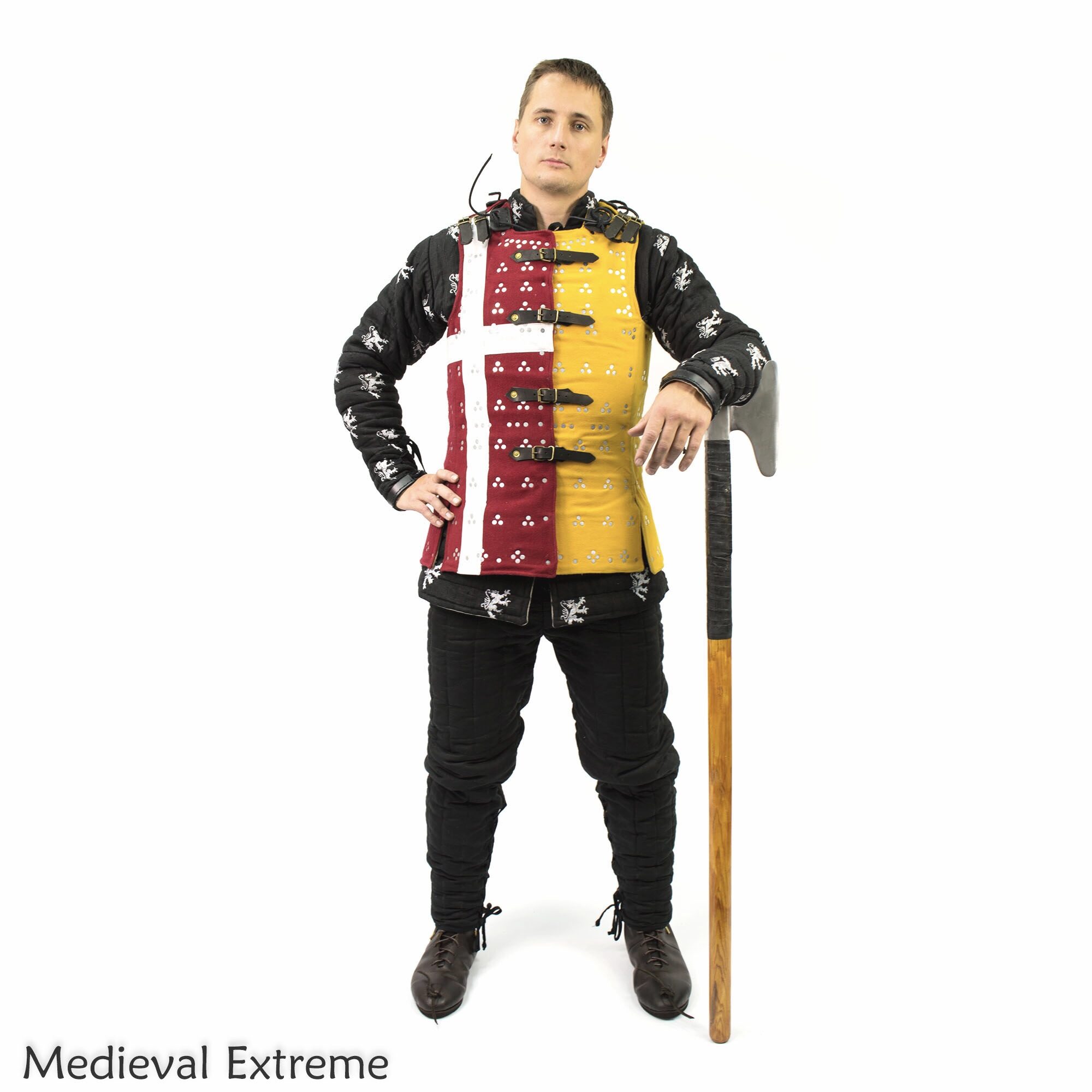
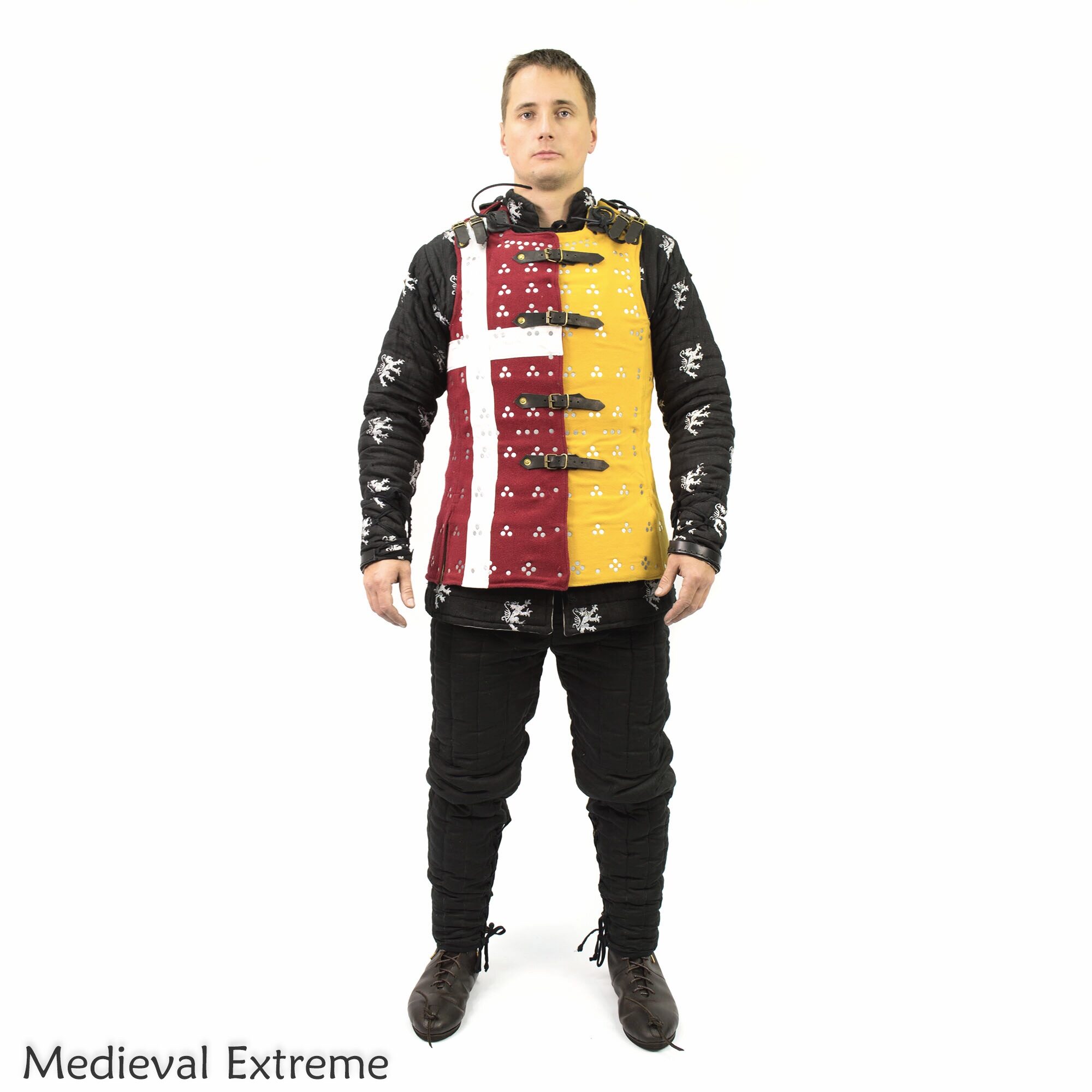
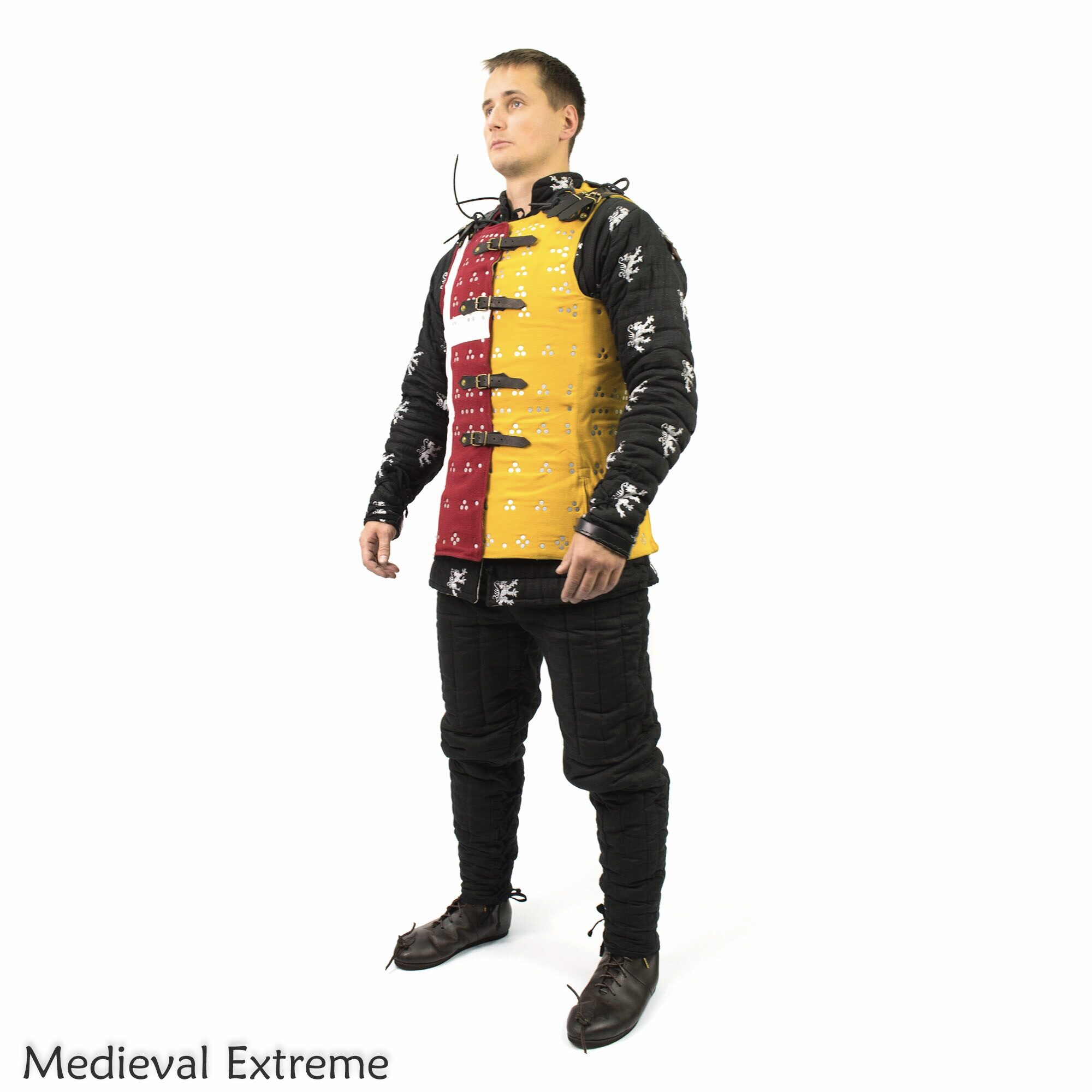
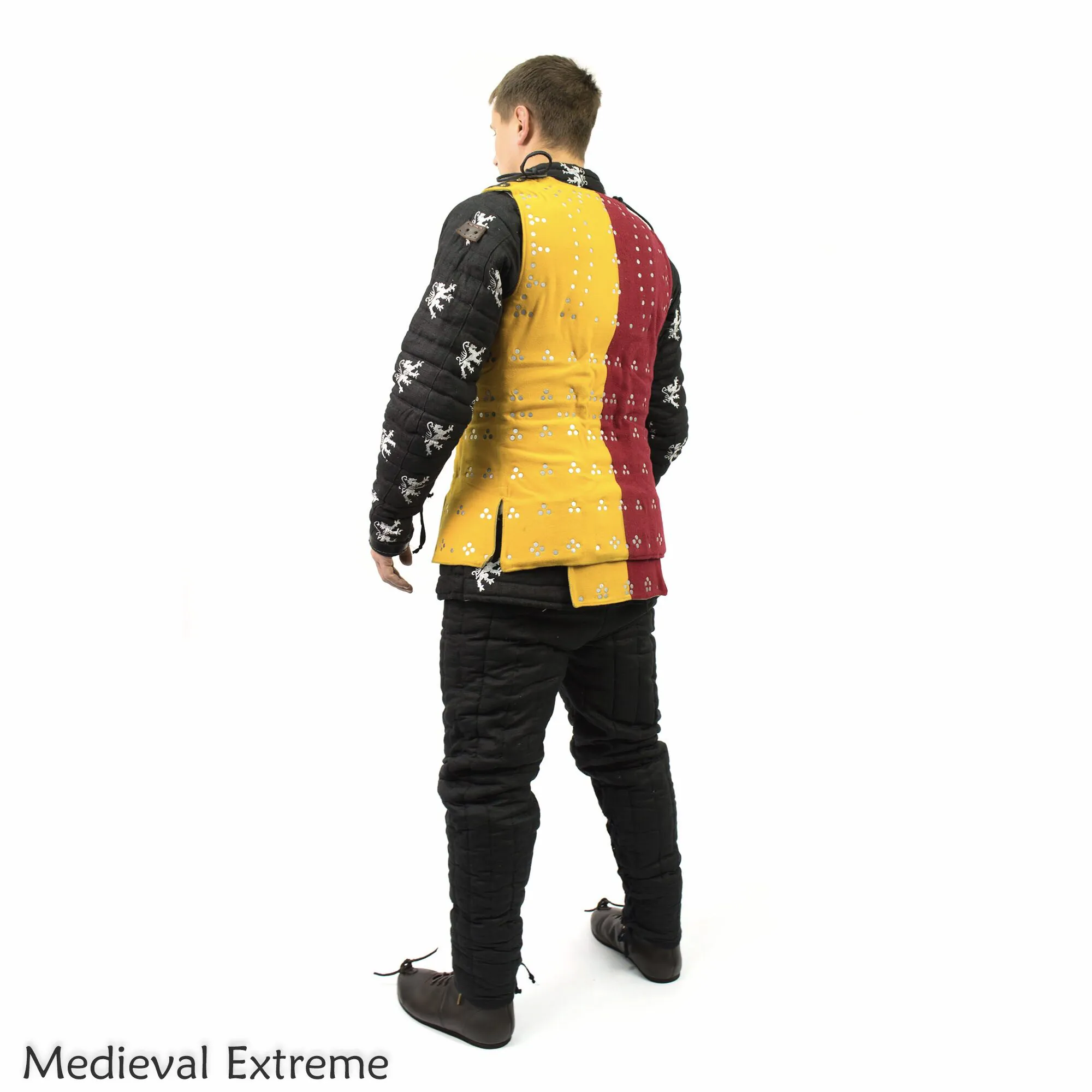
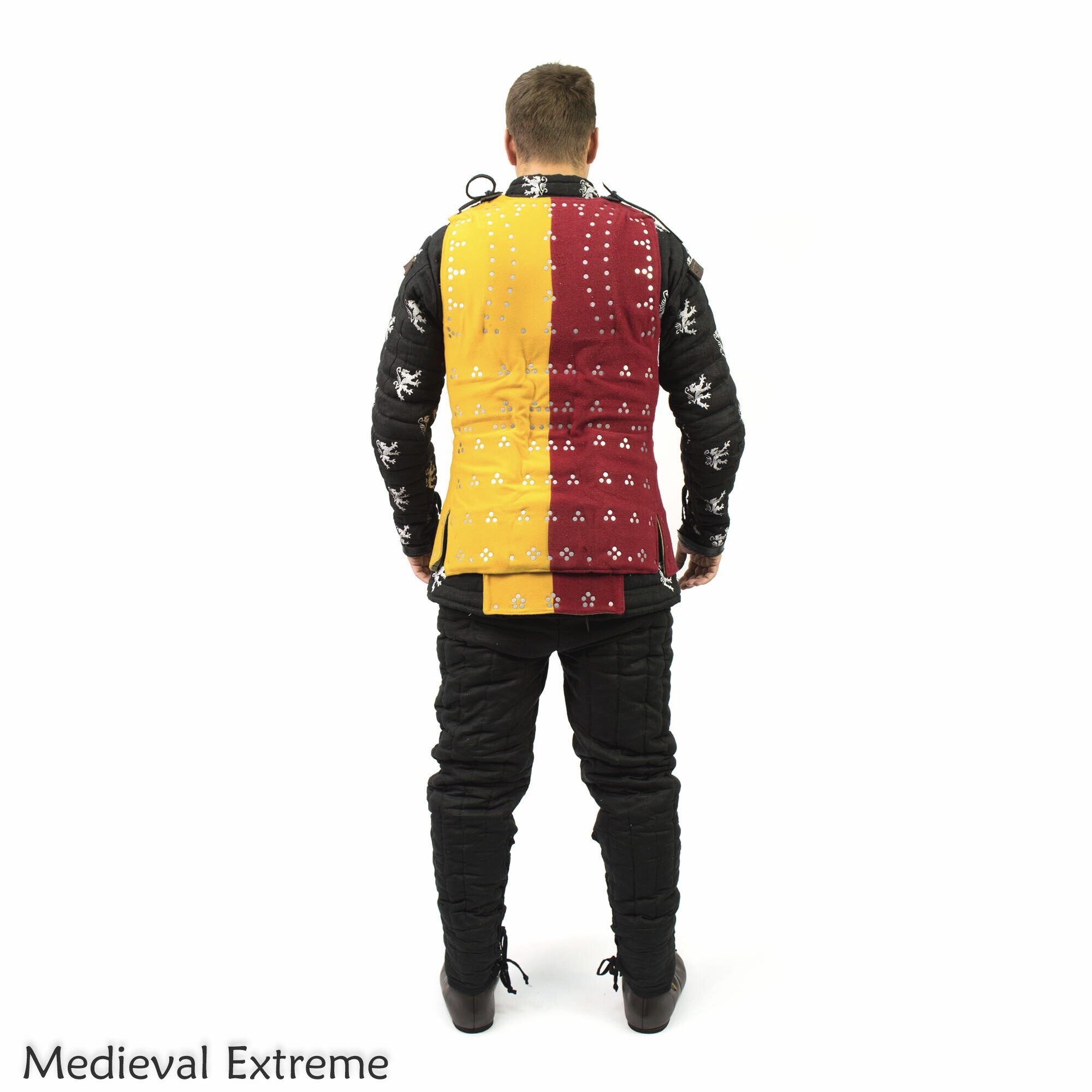
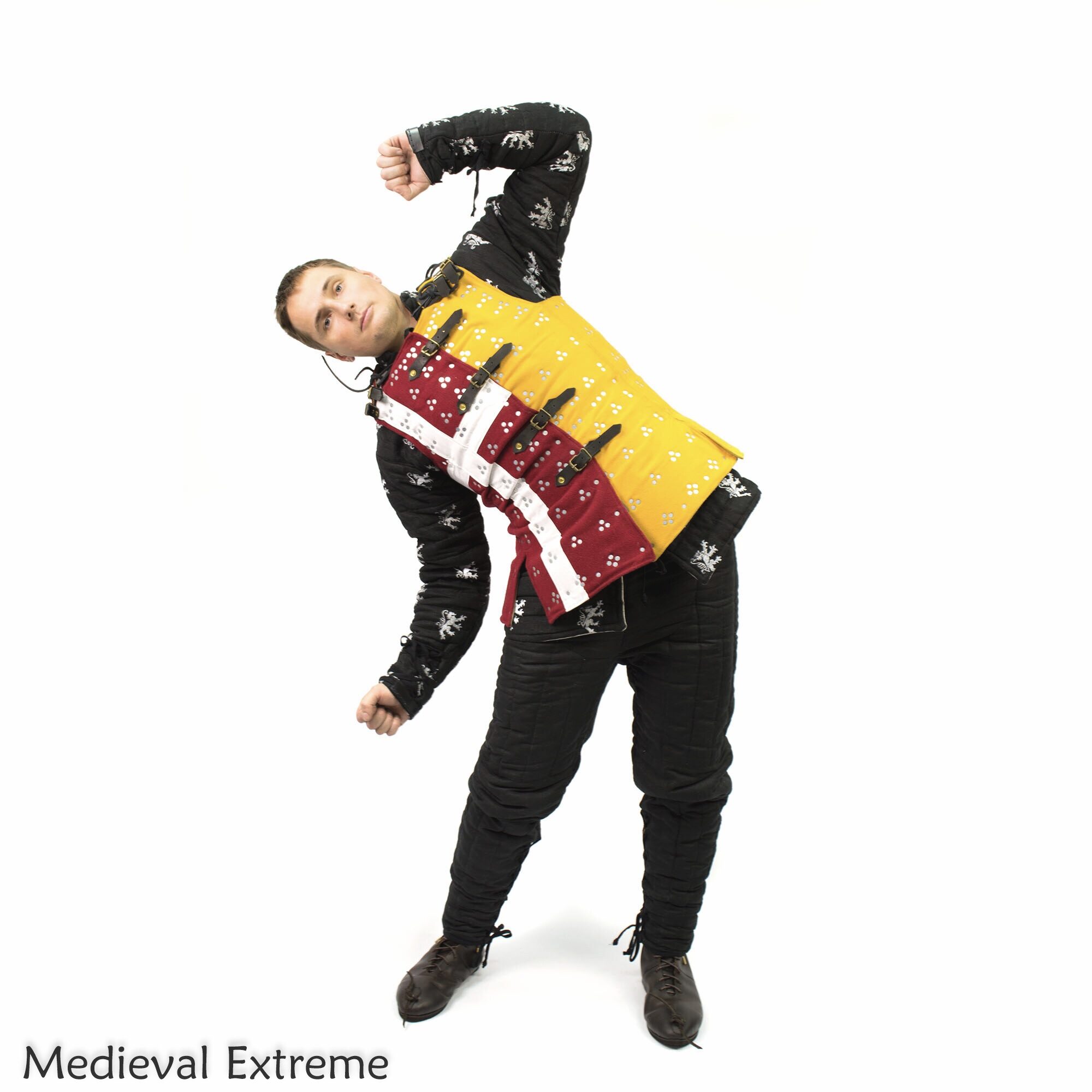
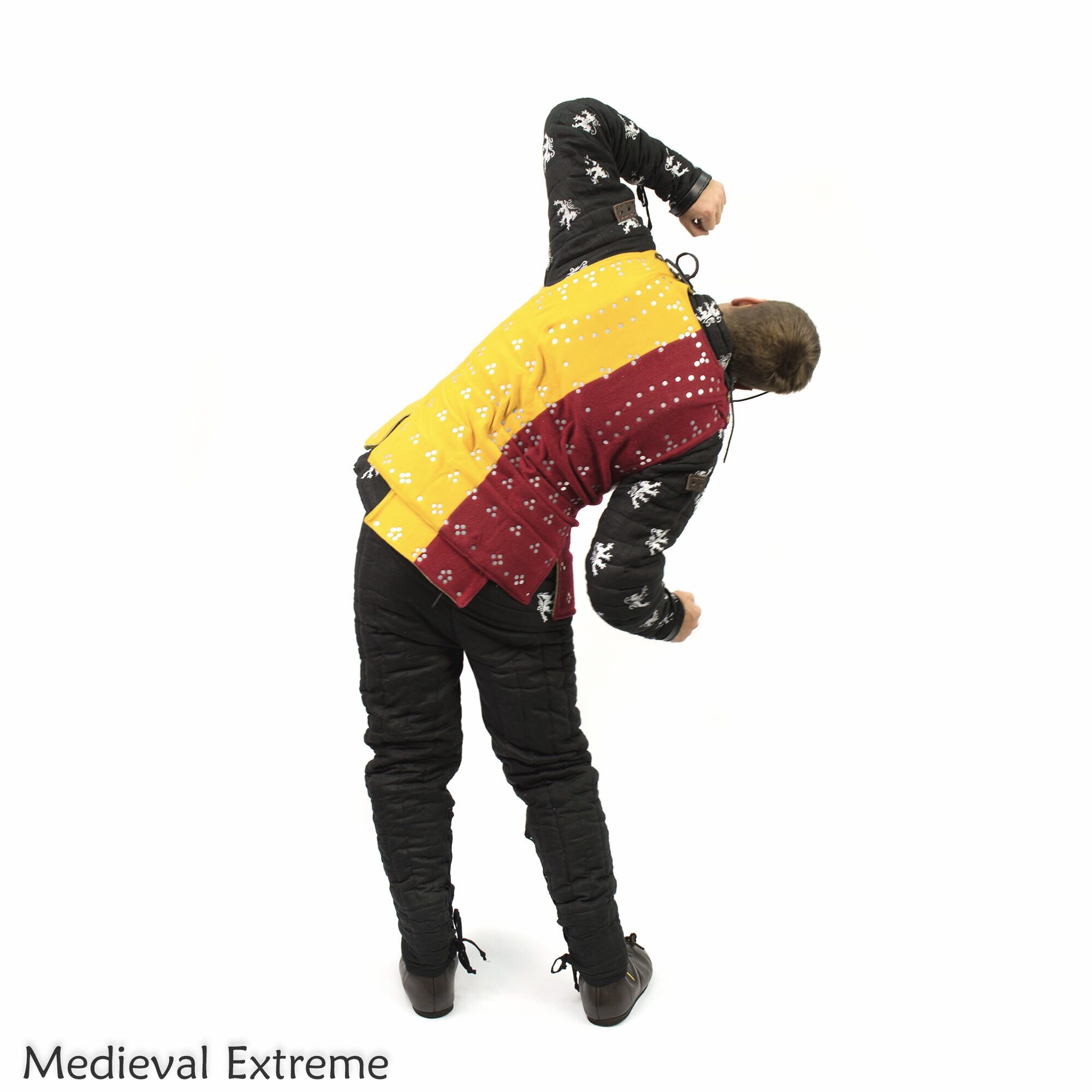
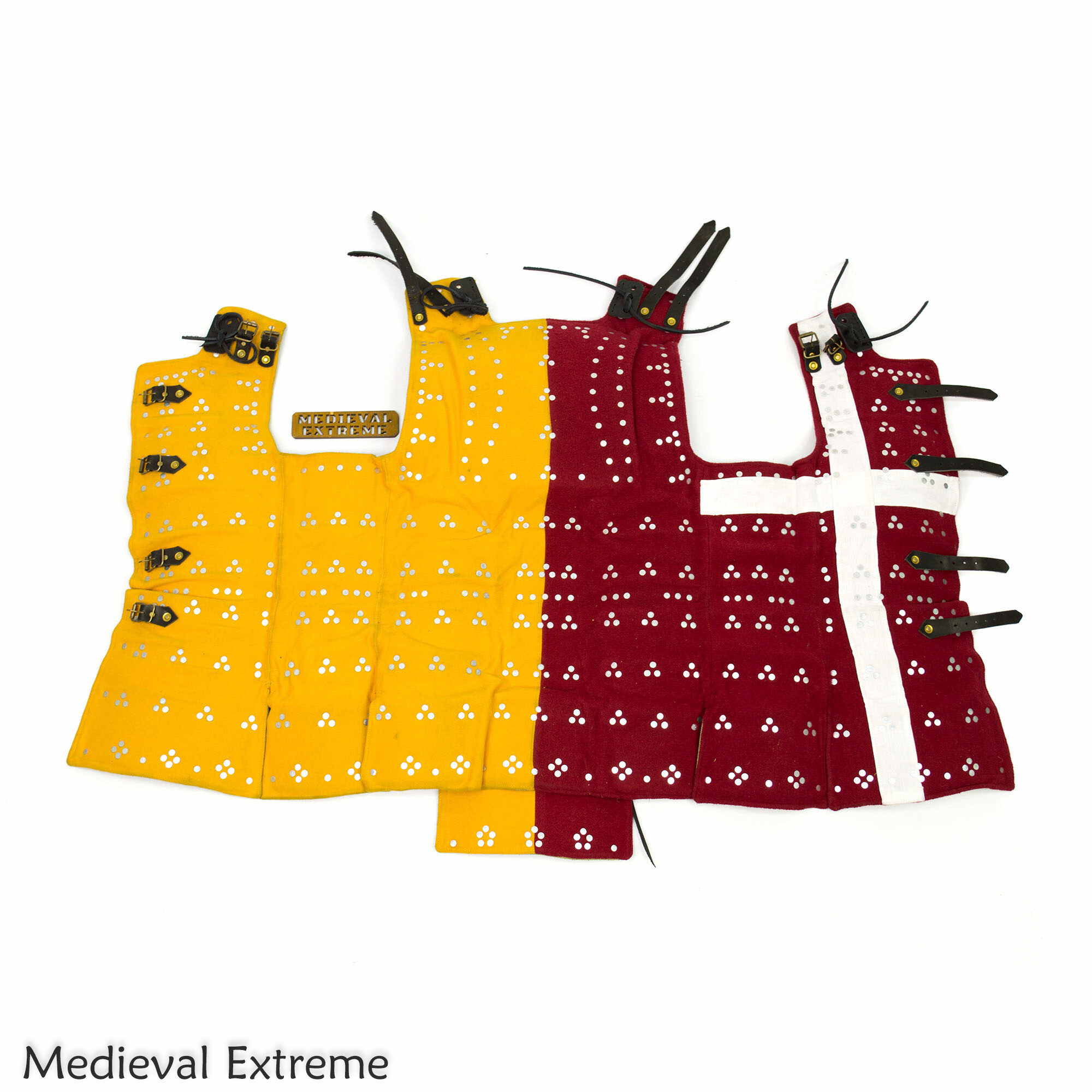
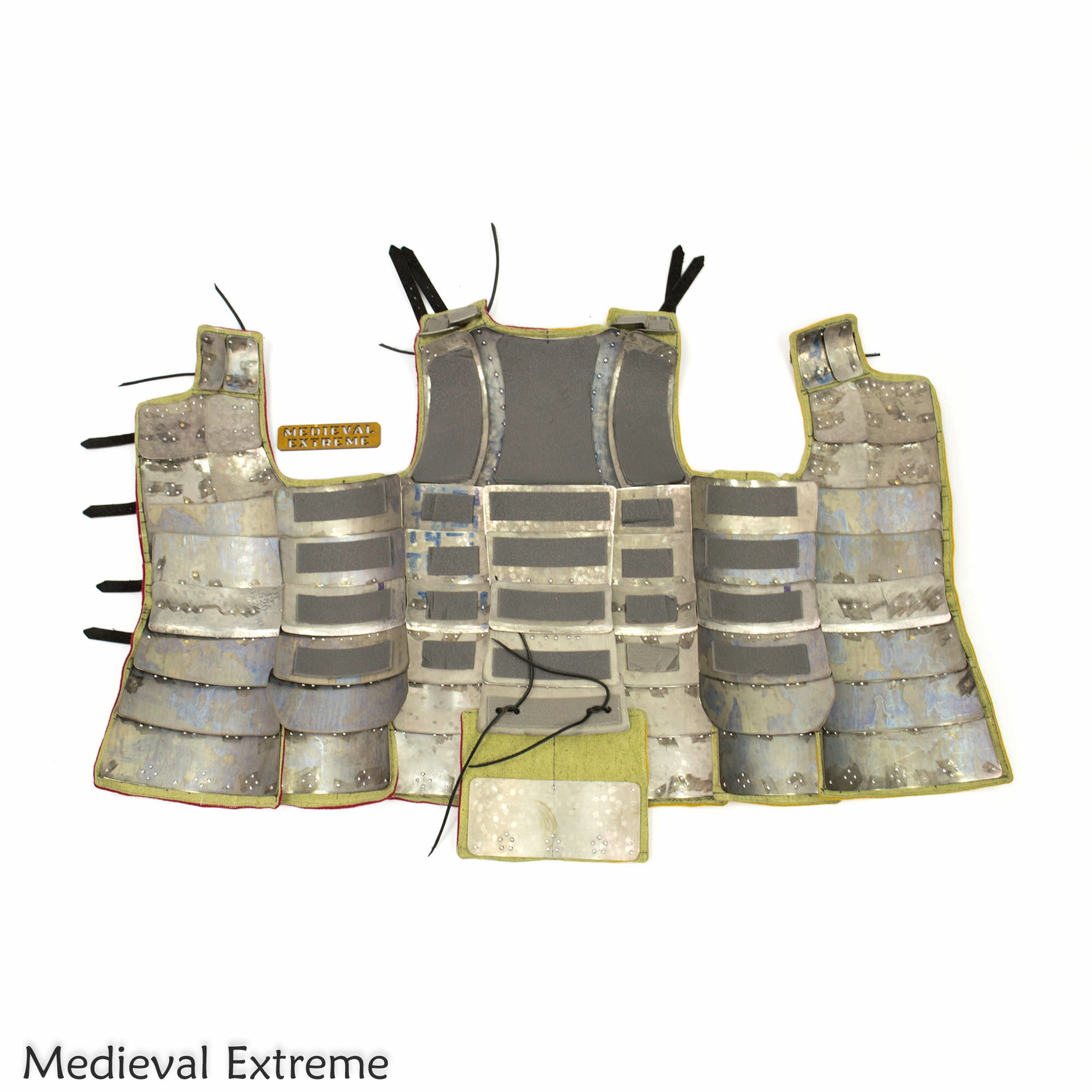
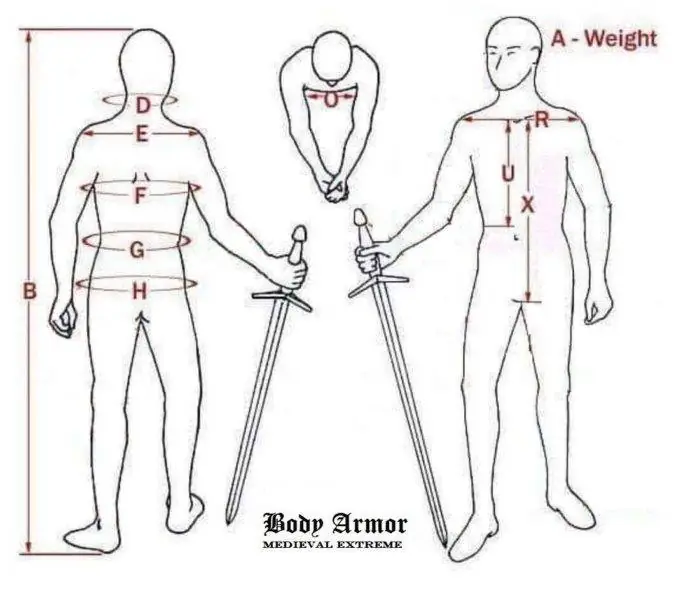
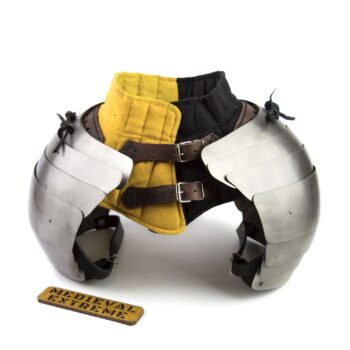
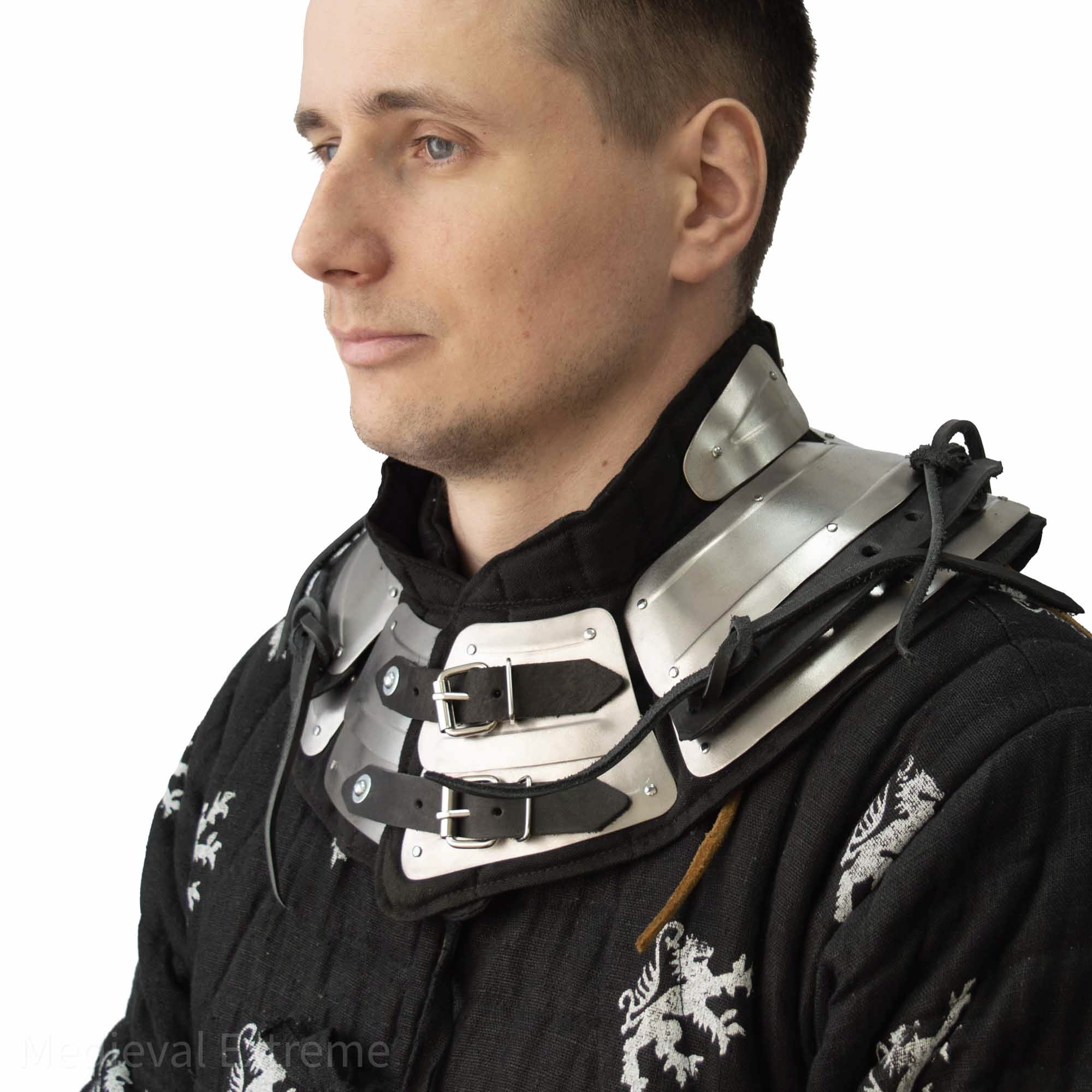
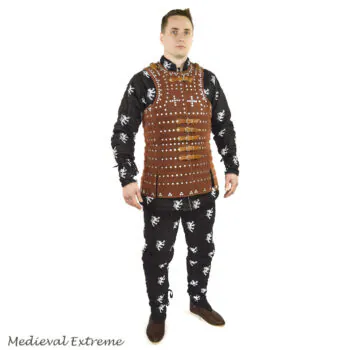
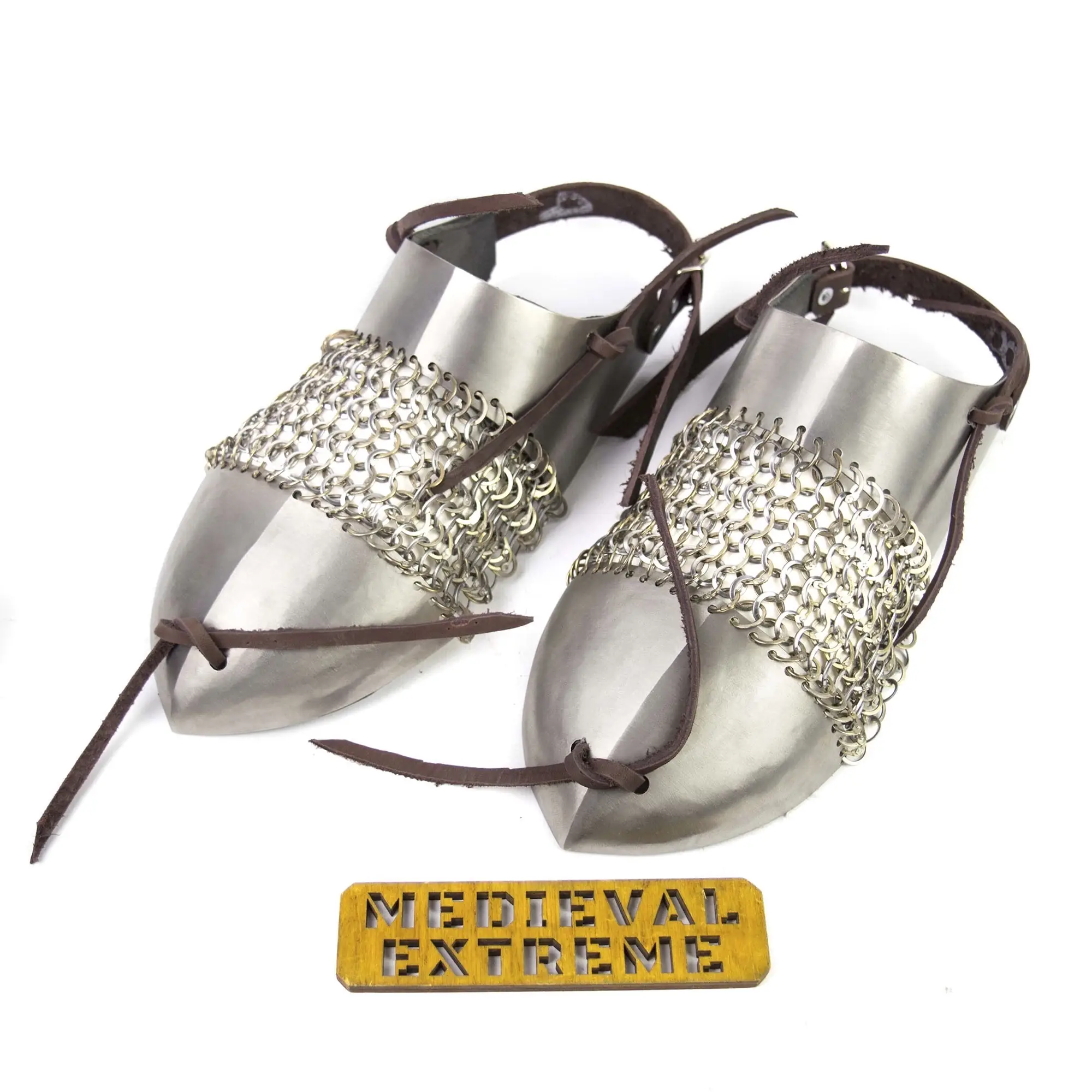
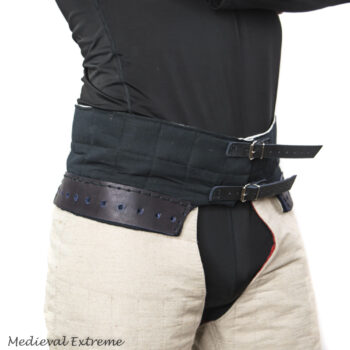
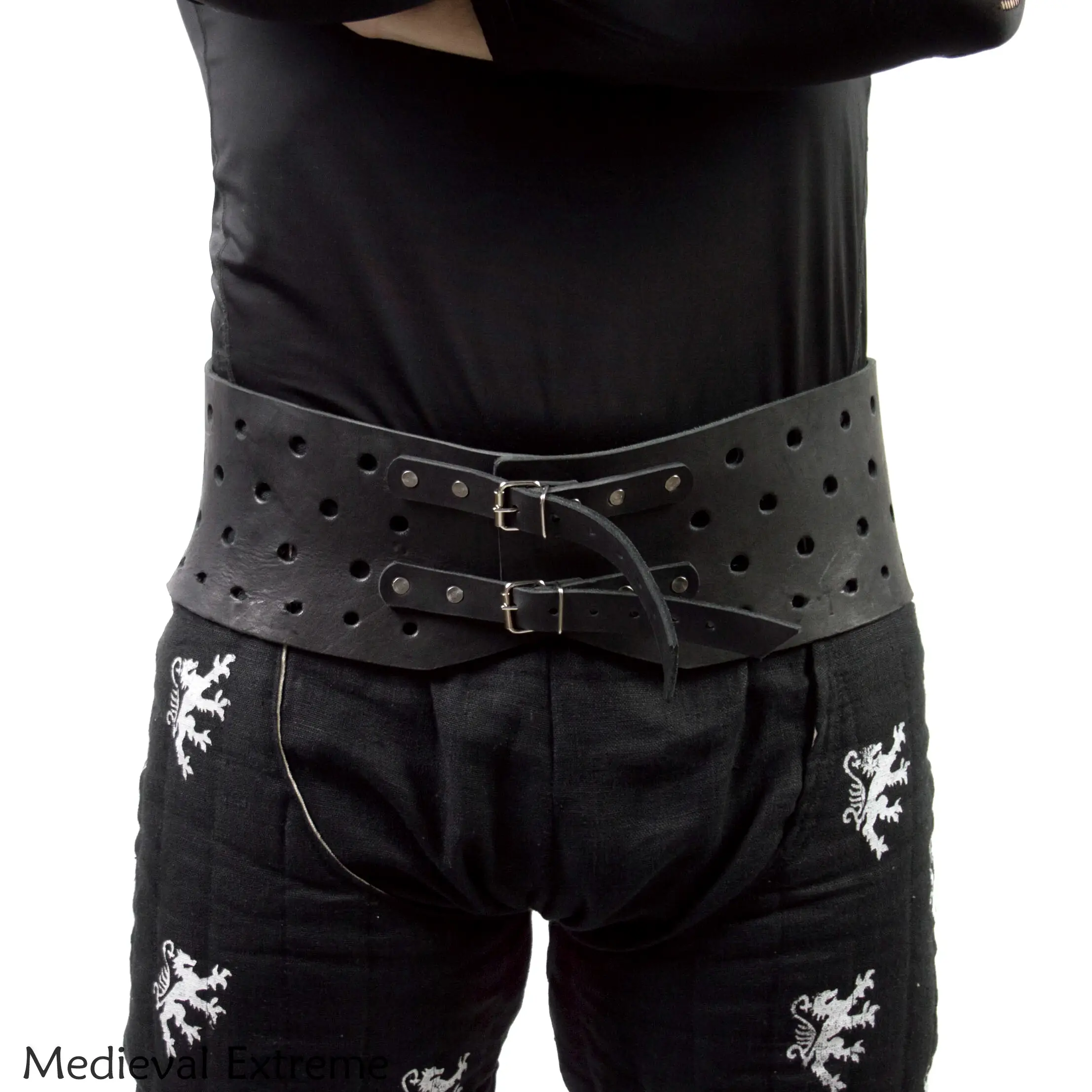
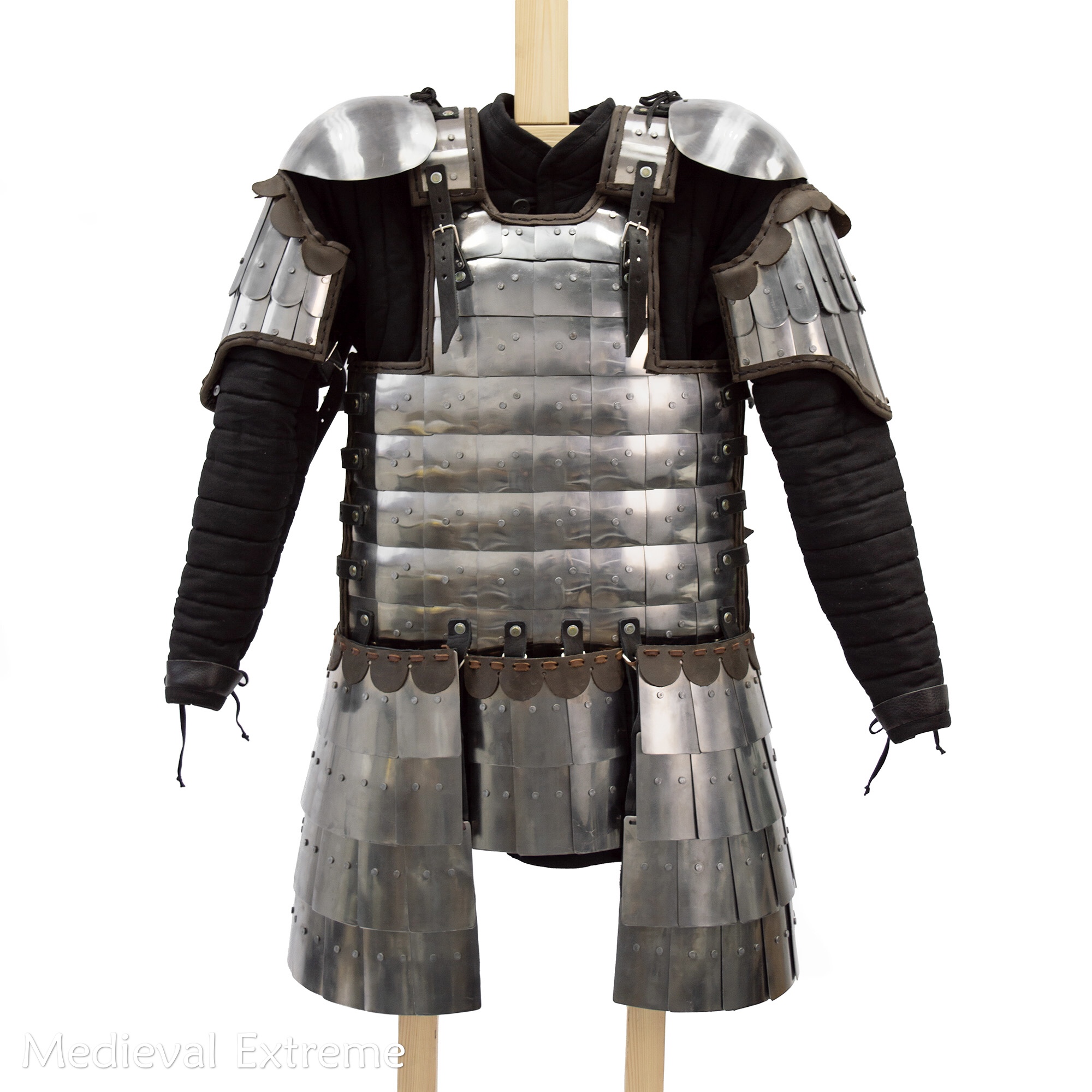
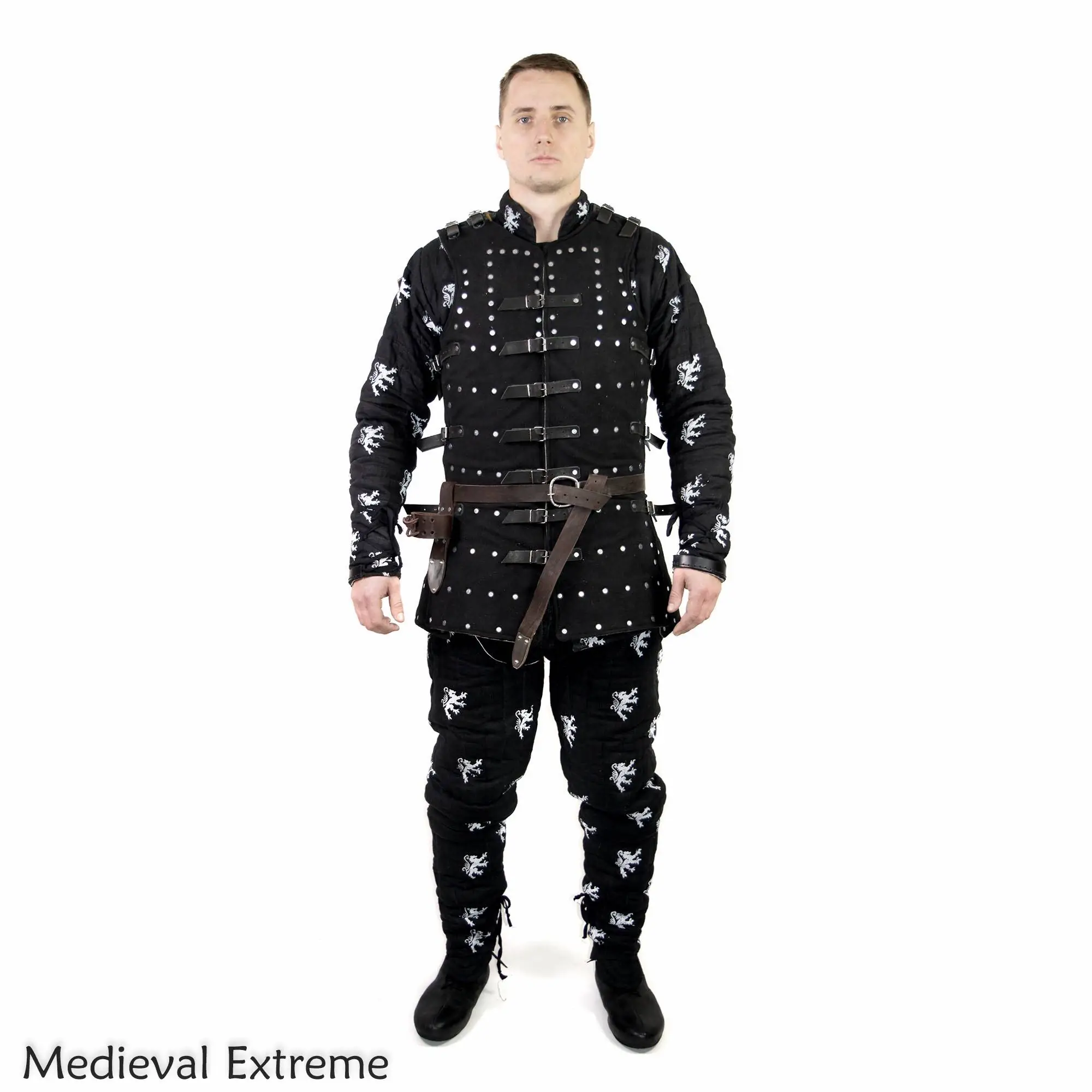
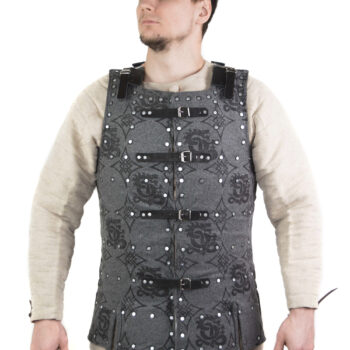
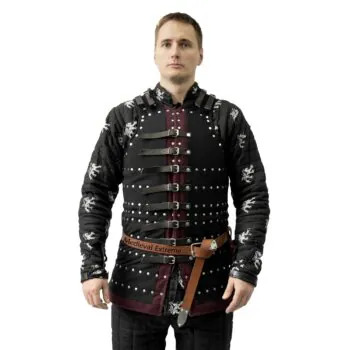
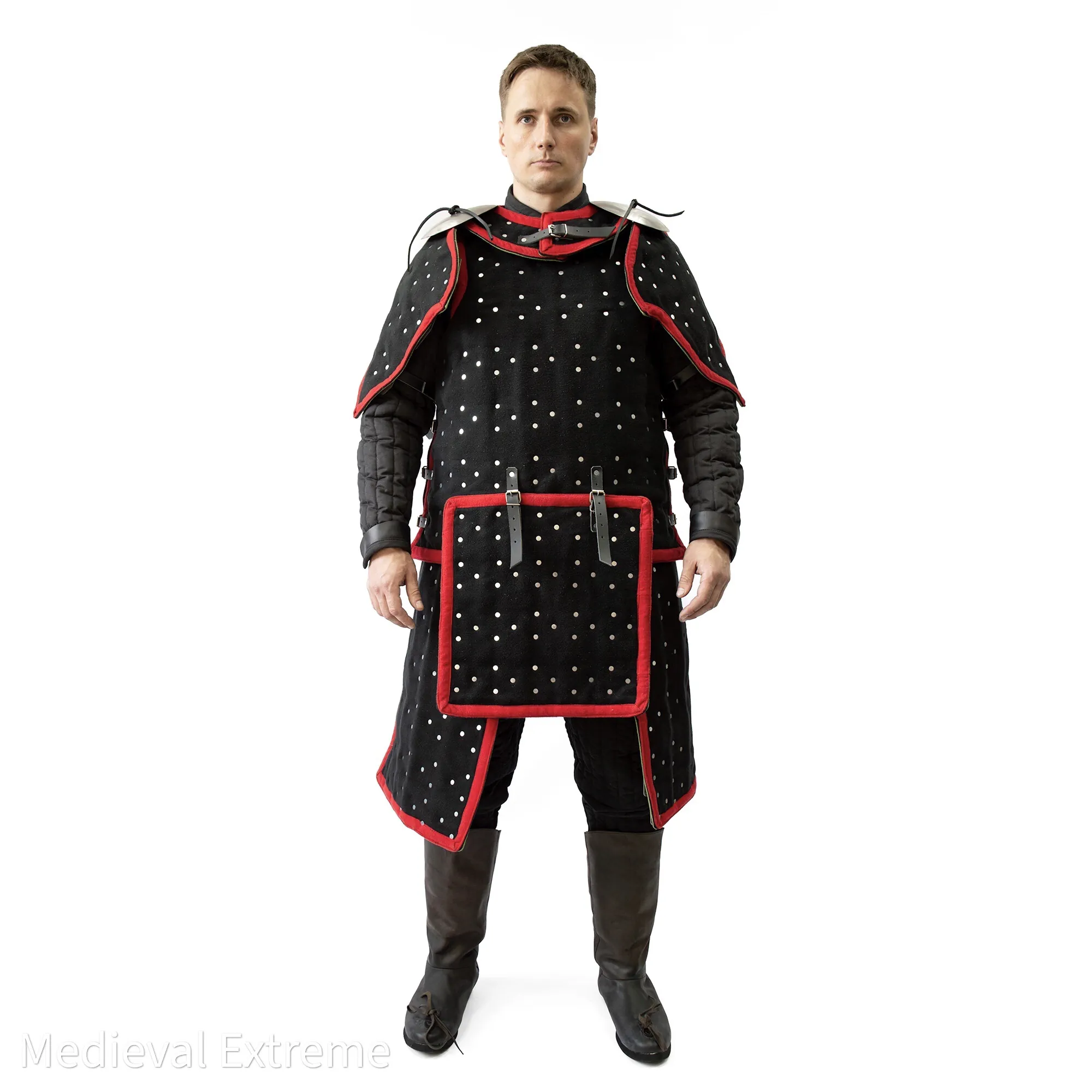
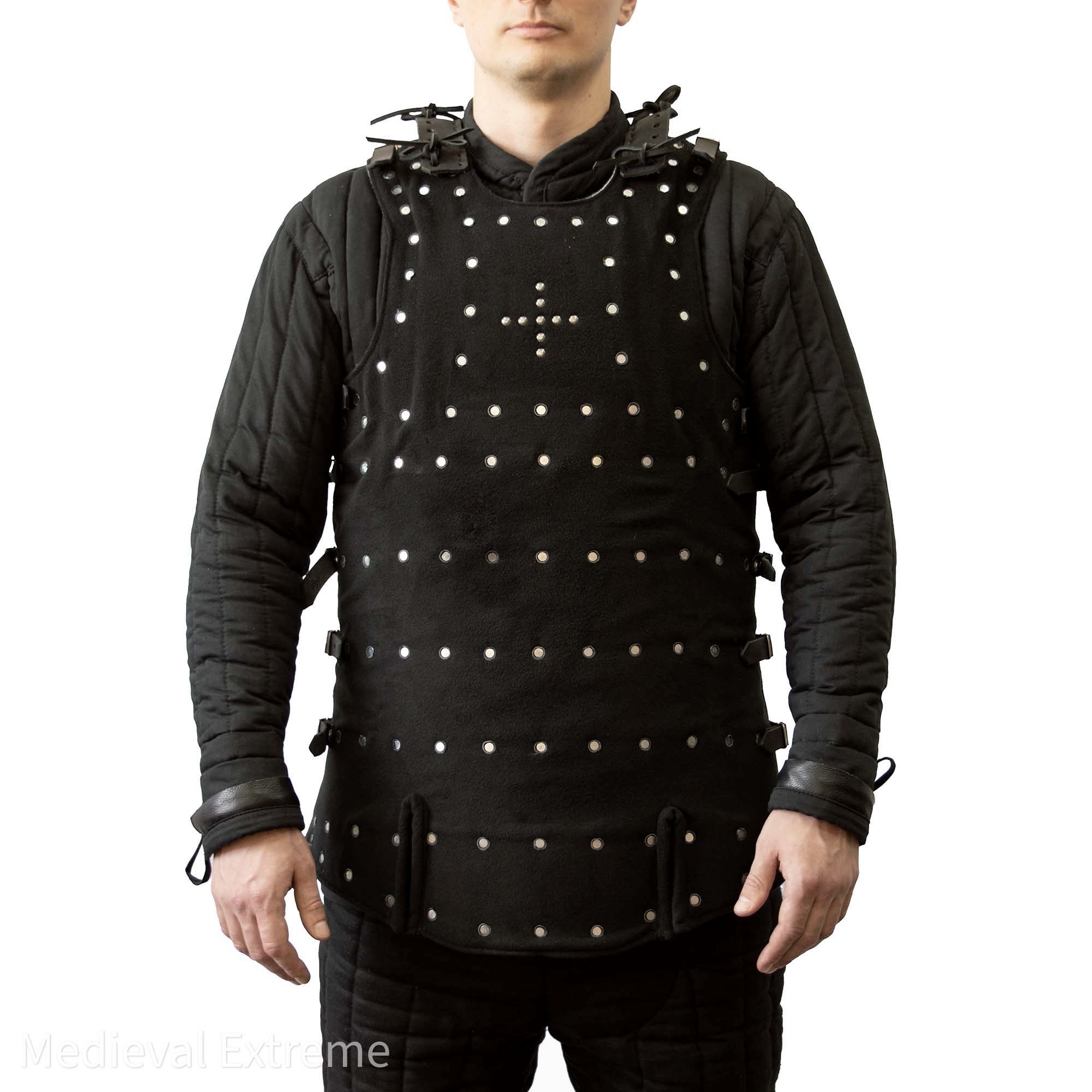
Reviews
There are no reviews yet.